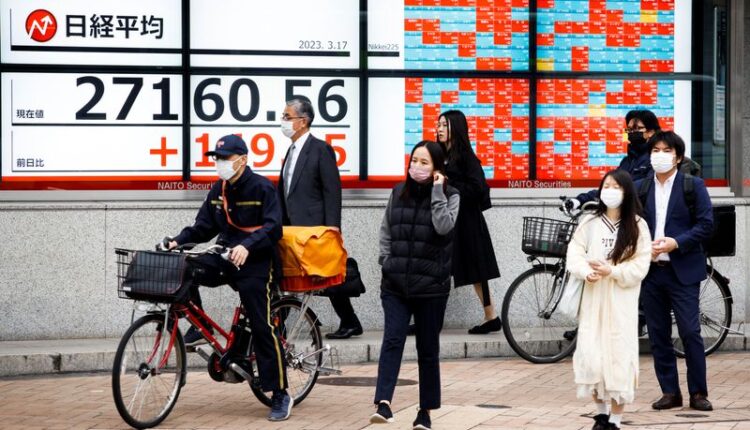European shares, US share futures rise on earnings boost
By Alun John and Scott Murdoch
LONDON/SYDNEY (Reuters) – European stocks hit a 14-month high on Tuesday and U.S. share futures rose after better-than-expected Chinese economic data and earnings beats from heavyweight U.S. companies including Bank of America (NYSE:BAC).
S&P 500 futures rose 0.4% and Nasdaq futures gained 0.6%, spurred by improved profits at Bank of America, Bank Of New York Mellon, and Johnson & Johnson (NYSE:JNJ), which all rose in premarket trading.
Goldman Sachs (NYSE:GS) dipped in premarket, however, after a slowdown in deal-making hit profits.
Europe’s broad STOXX 600 index rose 0.55% to its highest since Feb 2022, setting an intraday 14-month peak for the third successive session, with bank stocks, up 1.36%, to the fore.
A combination of cheap valuations, signs that China’s reopening is boosting European companies, a weak dollar and easing inflation have supported European shares in recent months.
China’s economy grew by 4.5% year-on-year for the first quarter, eclipsing the expectations of most economists, data released on Tuesday showed.
That helped China’s yuan, the China-exposed Australian and New Zealand currencies and onshore Chinese blue chip stocks to strengthen, but the patchiness of the recovery meant gains were not universal. Hong Kong and Australian share benchmarks both fell.
Separate data on Chinese activity, also released on Tuesday, showed factory output speeding up but missing expectations while fixed asset investment growth unexpectedly slowed.
“The headline number is a positive surprise and overall it’s a good set of numbers, albeit uneven, and that is reflected in the markets’ response,” said David Chao, global market strategist for Asia Pacific at Invesco.
“The thesis the market has that China is exiting the pandemic and growth will be driven by consumption is still intact. While the recovery is on track, I don’t think economic growth from what we have seen so far is exceeding expectations too much.”
Chao said weaker property investment during the quarter showed the trouble-prone sector had not recovered and could again hold back China’s economic growth this year.
An index of Hong Kong-listed Chinese property firms dipped 1.4%.
EYES ON BANK OF ENGLAND
In Europe, Britain’s unemployment rate rose unexpectedly in the three months to February but pay growth stayed higher than forecast, underscoring concerns about the stickiness of inflation in Britain and expectations that the Bank of England will have to continue raising interest rates.
That sent the pound higher and it was last up 0.48% against the dollar at $1.2437 heading back towards last week’s 10-month high, and also a touch stronger versus the euro. [GBP/]
“The data, or at least the earnings part, was a bit stronger than expected, even if the headline numbers were a touch weaker, and it certainly seemed to underpin the market’s perception that the Bank of England will tighten policy again,” said Jane Foley head of FX strategy at Rabobank.
She said that had pushed the pound higher and “it brings home the risks that the Bank of England could go not once but twice”.
The euro rose 0.46% against the dollar to $1.09775, also heading back towards last week’s 14-month top.
European and longer dated U.S. government bond yields dipped a touch, having traded higher earlier in the day.
German benchmark 10-year yields reached 2.502%, their highest since 15 March, but were last 3 basis points down from their previous close at 2.448%.
The 10-year Treasury yield reached 3.608%, matching the previous day’s around three-week high, and was last down a touch at 3.578%. [GVD/EUR]
Elsewhere, Australia’s central bank considered hiking rates for an 11th time in April before deciding to pause, but was ready to tighten further if inflation and demand failed to cool, minutes of the Reserve Bank of Australia’s April meeting showed
U.S. crude dipped 0.3% to $80.42 a barrel. Brent crude lost 0.3% to $84.5. [O/R]
Spot gold rose 0.45% to $2,004 per ounce. [GOL/]

